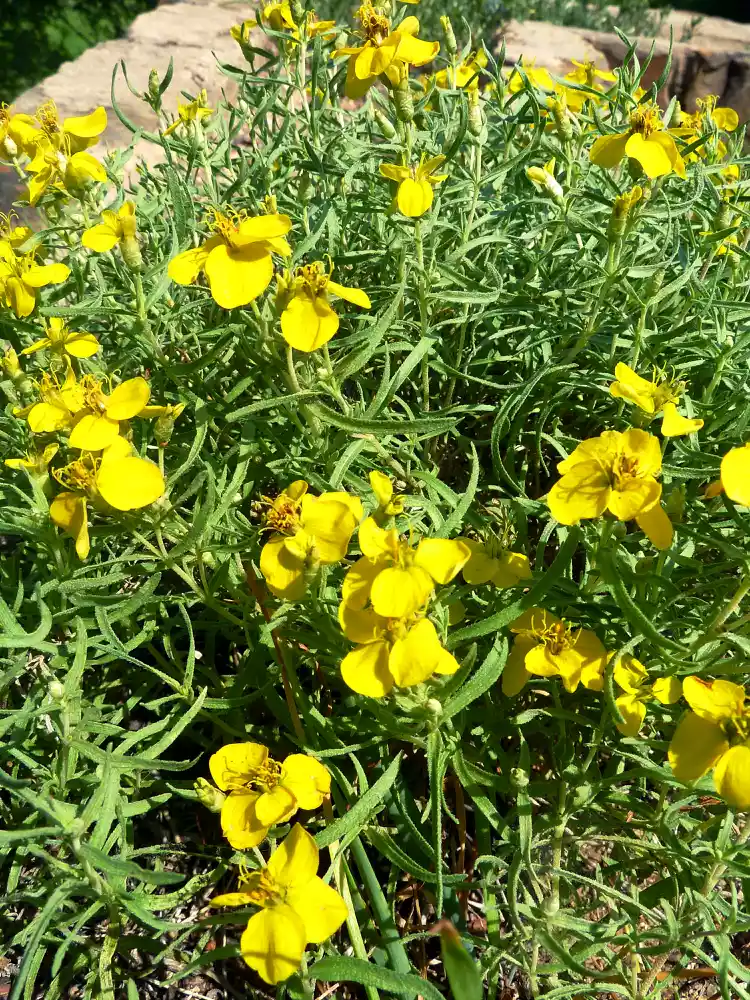Are zinnias perennials that you don't need to replant next year? There are actually several species of these colorful flowers, all in the genus Zinnia, which includes both perennials and annuals. However, the most popular for gardens is the common or elegant zinnia (Zinnia elegans). It's the one that has been grown and hybridized extensively to give us hundreds of dazzling varieties to choose from. These plants are annuals, but there are a few perennial types of zinnias as well that are worth a spot in your garden.
What is an annual plant?
An annual plant is one that completes its life cycle within one year or growing season—going from seed germination through vegetative growth, reproduction (flowering), and seed drop before dying.
Perennial Zinnias
A few zinnias native to the American Southwest are perennials, the best-known one being Zinnia grandiflora, which goes by several common names such as plains zinnia or Rocky Mountain zinnia. This type of zinnia is hardy in USDA Zones 4-9 and doesn't look much like its popular annual cousin. Plains zinnia is a low-mounded plant with single flowers in pale yellow. It grows well in drier, rockier locations and can be an excellent choice for a rock garden or pathway border. You may be able to find perennial zinnia plants or seeds from a native plant vendor.
Growing Zinnias from Seeds
While annual zinnias won't last beyond your current growing season, they may reseed themselves if given a chance. Hybrid zinnias that self-seed won’t produce plants that are identical to the parent plants, but you’ll get new zinnias to enjoy anyway. In general, most gardeners just purchase and plant new seeds each spring rather than counting on self-seeding to be successful, especially if there are specific varieties they want to grow.
Zinnias are easy to grow from seeds, making them great flowers for new gardeners or children. Just plant the seeds in a spot with full sun—zinnias don’t mind the heat—and fertile, well-drained soil. They will also grow well in containers, especially shorter varieties.
When and How to Plant Zinnia Seeds
Zinnia seeds germinate quickly in warm soil. After your area's last frost date in spring, when soil temperatures have warmed up, plant zinnia seeds about ¼ inch deep. Zinnia seeds are thin and small, so don’t worry if two fall into the same hole. You can thin them later if needed. There is no “up” or “down,” so just let them drop in. Then, lightly cover with soil and gently but deeply water the area.
Zinnia plants can be spaced pretty close together. Larger varieties will need a bit more space: Try planting seeds 8-12 inches apart in rows that are 12 inches apart. Shorter types can be closer together since the plants won’t grow as large.
Keep new seedlings thriving by watering from below if you can, because zinnias are susceptible to spotting from water drops and leaf diseases like powdery mildew. It also helps to water in the morning when possible, so warming daytime temperatures help to dry off any splashed water quickly.
Growing Zinnia in Pots
Zinnias are adaptable flowers, so planting seeds in pots will work as well as planting seeds in the ground. Choose a pot that is 8-12 inches in diameter with drainage at the bottom. Place the seeds ¼-inch deep in the soil, and only water when the soil feels dry. These plants need 6-8 hours of sunlight per day, so place the pots in an area that receives enough light and is protected from the wind.




















